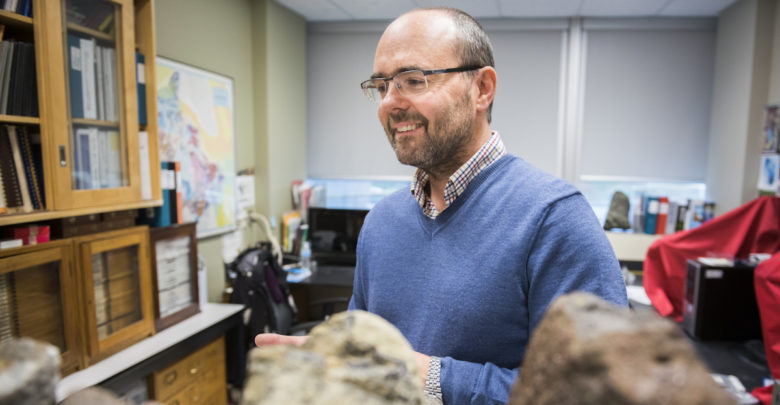 Supplied - John Ulan
Supplied - John Ulan The inside of the Earth has always been mysterious, but after some new research, it just got a little bit weirder.
University of Alberta professor Graham Pearson of the department of Earth and atmospheric sciences is part of a team of scientists looking at the composition of volcanic rocks called kimberlites, which come from some of the deepest parts of the earth. They use this information to investigate the Earth’s past to understand how it was formed, and in doing so discovered something strange, leaving the team with more questions than answers.
The deeper you go into the earth, the less disturbed the material is; it’s a more accurate picture of what the Earth was made of when it first formed. One can only study the composition of the inside of the earth by studying what comes out of it, and the rocks that come from the deepest parts of the Earth are kimberlites.
What this team discovered was that for a very long period of Earth’s history — which has been around for roughly 4.5 billion years — the part of Earth that kimberlites come from was relatively undisturbed, but about 200 million years ago that changed, and they aren’t entirely sure why.

The theory the team came up with was that during the existence of Pangea, the most recent supercontinent — when all the planet’s land mass is together in one big continent instead of spread out like it is now — there was one big area along the whole side of the continent where the floor of the ocean, called oceanic crust, was shoved down into the Earth where the ocean meets land. This area is called a subduction zone. There are subduction zones all over Earth right now, but none of them area nearly as big as the one that would have been created by Pangea, so the size of it would have sent this oceanic crust deeper into the earth than it had before.
“One possibility is that either during the establishment or breakup of Pangea there was this enhanced recycling of crust that led to contamination of some of the deeper parts of the earth that are not actually being contaminated before,” Pearson said. “And that’s fairly speculative and needs more work, but that’s a reason why we think that happened.”
“Something very dramatic happened,” Pearson added. “It may have been a shift in plate velocity, or just the geometry of plate subduction that meant that those unaccessed parts of the earth, really all of a sudden, you started contaminating them with recycled crustal material.”
Kimberlites, while being very useful for looking at the inside of the earth, are also where we find most diamonds, making them important economically. Pearson said this made for a really great opportunity for geologists because they’re able to do research that benefits science and the economy at the same time.
“We have the advantage that these often are very remarkable and exciting theoretical spinoffs working on those rocks that are both economically important but are also, from an academic standpoint, really important in terms of them being the only way of interrogating the deep interior of the earth,” he said.
“So we have this nice balance between doing what we like to think is economically relevant research but also it has these tremendous payoffs in terms of fundamental research as well. It’s not in every field that you’re able to do that.”




